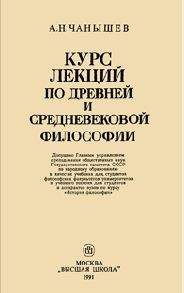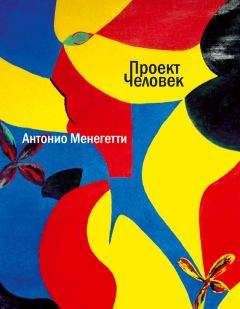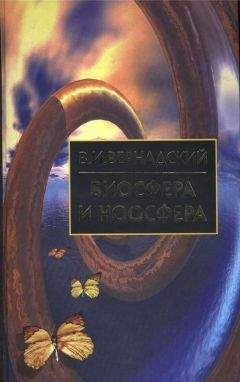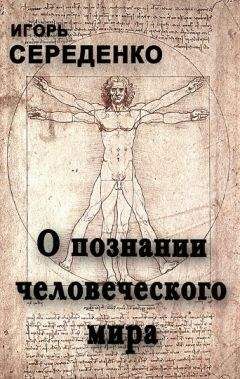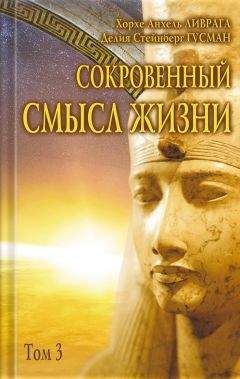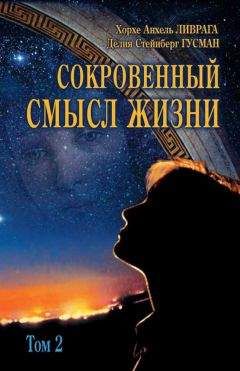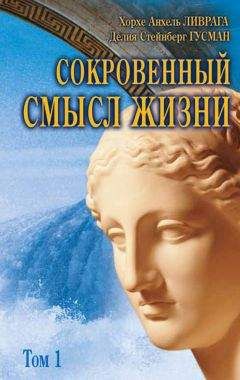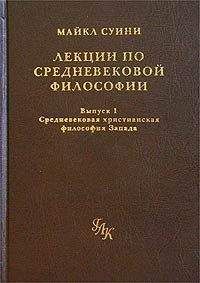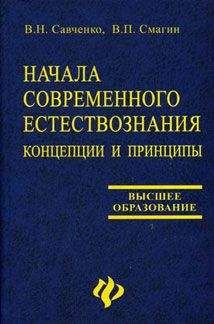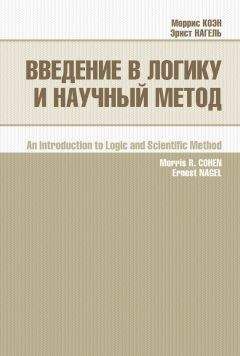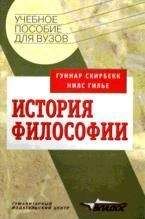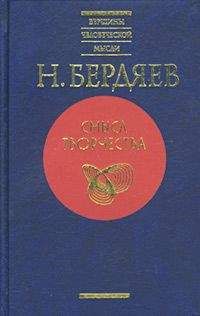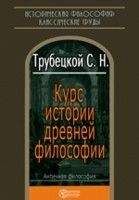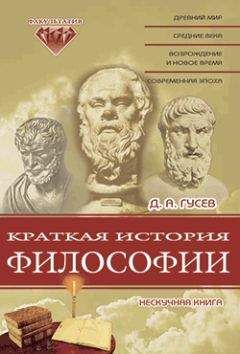Николай Клягин - Современная научная картина мира
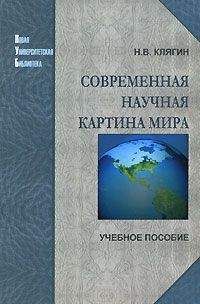
Скачивание начинается... Если скачивание не началось автоматически, пожалуйста нажмите на эту ссылку.
Жалоба
Напишите нам, и мы в срочном порядке примем меры.
Описание книги "Современная научная картина мира"
Описание и краткое содержание "Современная научная картина мира" читать бесплатно онлайн.
Рассматривается современная научная картина мира, охватывается широчайший спектр данных космогонии, биогенеза, антропогенеза, социогенеза и др. Эти данные настолько разнородны, что подпадают под общий знаменатель только на уровне универсального причинно-следственного закона. Для понимания его происхождения необходимо объяснить, как возникли законы сохранения и неубывания энтропии. Чтобы протянуть нить причинности от физического и астрономического мира к человеческому обществу, нужно осмыслить пути и результаты биоэволюции. Все это дает нам возможность понять, где находится центр Вселенной, как и почему возникли и угасли динозавры, отчего человек единственный на планете обладает наукой и искусством.
Для студентов высших учебных заведений, изучающих курс «Концепция современного естествознания». Может использоваться аспирантами при подготовке к экзамену по кандидатскому минимуму в области истории и философии науки.
327. Forward R. The power of negative matter // New scientist. 1990. V. 125, № 1708. P. 54–56.
328. Fox R. C., Youzwyshyn G. P., Krause D. W. Post-Jurassic mammal-like reptile from the Palaeocene // Nature. 1992. V. 358, № 6383. P. 233–235.
329. Fraser N. At the feet of the dinosaurs // New scientist. 1988. V. 120, № 1633. P. 39–42.
330. Fraser N.C., Walkden G.M., Stewart V. The first pre-Rhaetic therian mammal // Nature. 1985. V. 314, № 6007. P. 161–163.
331. Freedman W.L., Madore B.F., Mould J.R., Hill R., Ferrarese L., Kennicutt Jr R.C., Saha A., Stetson P.B., Graham J.A., Ford H., Hoessel J.G., Huchra J., Hughes S.M., Illingworth G.D. Distance to the Virgo cluster galaxy M 100 from Hubble Space Telescope observations of Cepheids // Nature. 1994. V. 371, № 6500. P. 757–762.
332. Frenk C.S., White S.D.M., Efstathiou G., Davis M. Cold dark matter, the structure of galactic haloes and origin of the Hubble sequence // Nature. 1985. V. 317, № 6038. P. 595–597.
333. Frenk C., White S. More missing matter mystery // Nature. 1985. V. 317, № 6039. P. 670–671.
334. Fritzsch B. Inner ear of the coelacanth fish Latimeria has tetrapod affinites // Nature. 1987. V. 327, № 6118. P. 153–154.
335. Fu Y.-X., Li W.-H. Estimating the Age of the Common Ancestor of Men from the ZFY Intron // Science. 1996. V. 272, № 5266. P. 1356–1357.
336. Fukugita M., Hogan C.J., Peebles J.E. The cosmic distance scale and the Hubble constant // Nature. 1993. V. 366, № 6453. P. 309–312.
337. Gabunia L., Vekua A. A Plio-Pleistocene hominid from Dmanisi, East Georgia, Caucasus // Nature. 1995. V. 373, № 6514. P. 509–512.
338. Gabunia L., Vekua A., Lordkipanidze D., Swisher III C.C., Ferring R., Justus A., Nioradze M., Tvalchrelidze M., Antôn S.C., Bosinski G., Jöris O., Lumley M.-A.-de, Majsuradze G., Mouskhelishvili A. Earliest Pleistocene Hominid Cranial Remains from Dmanisi, Republic of Georgia: Taxonomy, Geological Setting, and Age // Science. 2000. V. 288, № 5468. P. 1019–1025.
339. Galtier N., Tourasse N., Gony M. A Nonhyperthermophilic Common Ancestor to Extant Life Forms // Science. 1999. V. 283, № 5399. P. 220–221.
340. Gardner R. A., Gardner B. T. Teaching Sign Language to a Chimpanzee // Science. 1969. V. 165, № 3894. P. 664–672.
341. Gaskell C. M. Direct estimate of Hubble’s constant from the double quasar // Nature. 1985. V. 314, № 6010. P. 402.
342. Gaucher E. A., Thomson J. M., Burgan M. F., Benner S. A. Inferring the palaeoenvironment of ancient bacteria on the basis of resurrected proteins // Nature. 2003. V. 425, № 6955. P. 285–288.
343. Gawiser E., Silk J. Extracting Primordial Density Fluctuations // Science. 1998. V. 280, № 5368. P. 1405–1411.
344. Gebo D. L., MacLatchy L., Kibyo R., Deino A., Kingston J., Pilbeam D. A Ho-minoid Genus from the Early Miocene of Uganda // Science. 1997. V. 276, № 5311. P. 401–404.
345. Gee H., Ahlberg P. E. Four legs to stand on… for Devonian vertebrates // Nature. 1989. V. 342, № 6251. P. 738–739.
346. Gensel P. G., Andrews H. N. The Evolution of Early Land Plants // American Scientist. 1987. V. 75, № 5. P. 478–489.
347. Gersonde R., Kyte F. T., Bleil U., Diekmann B., Flores J.A., Gohl K., Grahl G., Hagen R., Kuhn G., Sierro F. J., Völker D., Abelmann A., Bostwick J. A. Geological record and reconstruction of the late Pliocene impact of the Eltanin asteroid in the Southern Ocean // Nature. 1997. V. 390, № 6658. P. 357–363.
348. Gibbons A. Chimps: More Diverse Than a Barrel of Monkeys // Scitnce. 1992. V. 255, № 5042. P. 287–288.
349. Gibbons A. Paleoanthropologists Launch A Society of Their Own // Science. 1992. V. 256, № 5061. P. 1281–1282.
350. Gibbohs A. New Study Points to Eurasian Ape as Great Ape Ancestor // Science. 1998. V. 281, № 5377. P. 622–623.
351. Gibbons G. Quantum gravity: the last frontier // New scientist. 1985. V. 108, № 1480. P. 45–47.
352. Gibert J., Sanchez F., Ribot F., Gibert L., Ferrandez C., Iglesias A., Gibert P., González F. Restes humains dans les sédiments du Pléistocène inférieur de la région d’Orce et de Cueva Victoria (sud-est de l’Espagne) // L’anthropologie. 2002. V. 106, № 5. P. 669–683.
353. Gilbert W. The RNA world // Nature. 1986. V. 319, № 6055. P. 618.
354. Gingerich P. D., Haq M., Zalmout I. S., Khan I. H., Malkani M. S. Origin of Whales from Early Artiodactyls: Hands and Feet of Eocene Protocetidae from Pakistan // Science. 2001. V. 293, № 5538. P. 2239–2242.
355. Giovanelli R. Less expansion, more agreement // Nature. 1999. V. 400, № 6740. P. 111–112.
356. Glanz J. New Light on Fate of the Universe // Science. 1997. V. 278, № 5339. P. 799–800.
357. Glanz J. Exploding Stars Point to a Universal Repulsive Force // Science. 1998. V. 279, № 5351. P. 651–652.
358. Glanz J. Astronomers See a Cosmic Antigravity Force at Work // Science. 1998. V. 279, № 5355. P. 1298–1299.
359. Glanz J. No Backing Off From the Accelerating Universe // Science. 1998. V. 282, № 5392. P. 1249–1251.
360. Glanz J. Superheavy Particles From the Big Bang? // Science. 1999. V. 283, № 5405. P. 1095–1096.
361. Glen W. What Killed the Dinosaurs? // American Scientist. 1990. V. 78, № 4. P. 354–370.
362. Goodall J. Continuities between Chimpanzee and Human Behavior // Human Origins. Louis Leakey and the East African Evidence. A Staples Press Book. W.A. Benjamin, Inc., Menlo Park, Ca. – Reading, Mass. – L. – Amsterdam – Don Mills, Ontario – Sydney, 1976. P. 81–95.
363. Goodman B. Phylogeny! Did Bats Evolve Twice? // Science. 1991. V. 253, № 5015. P. 36.
364. Gorina D. P., Vaid J., Bellugi U. The Linguistic Basis of Left Hemisphere Specialization // Science. 1992. V. 255, № 5049. P. 1258–1260.
365. Gostin V. A., Haines P. W., Jenkins R. J. F., Compston W., Williams I. S. Impact Ejecta Horizon Within Late Precambrian Shales, Adelaide Geosyncline, South Australia // Science. 1986. V. 233, № 4760. P. 198–199.
366. Gostin V. A., Keays R. R., Wallace M. W. Iridium anomaly from Acraman impact ejecta horizon: impacts can produce sedimentary iridium peaks // Nature. 1989. V. 340, № 6234. P. 542–544.
366a. Gravina B., Mellars P., Ramsey C. B. Radiocarbon dating of interstratified Neanderthal and early modern human occupations at the Chatelperronian type-site // Nature. 2005. V. 438. № 7064. P. 51–56.
367. Graziosi P. Les industries paléolithiques à dos rabattu et le passage du Paléolithique au Mésolithique en Italie // Bulletin de la Société préhistorique française. 1951. T. 48, № 1–2. P. 55–61.
368. Graziosi P. L’arte preistorica in Italia. Firenze: Sansoni, 1973. 203 P.
369. Green M. B. Unification of forces and particles in superstring theories // Nature. 1985. V. 314, № 6010. P. 409–414.
370. Green M. Superstring Theories in the real world // New scientist. 1985. V. 107, № 1471. P. 35.
371. Gribbin J. In search of the missing mass // New scientist. 1986. V. 109, № 1490. P. 37–40.
372. Gribbin J. The structure of the Universe // New scientist. 1987. V. 116, № 1584. P. 58–62.
373. Gribbin J. An anniversary of some gravity // New scientist. 1987. V. 116, № 1586. P. 44–47.
374. Gribbin J. Famous for 14 minutes, 49 seconds // New scientist. 1993. V. 137, № 1864. P. 41–44.
375. Gribbin J. Is the Universe alive? // New scientist. 1994. V. 141, № 1908. P. 38–40.
376. Gribbin J. The Galaxy’s dark secrets // New scientist. 1994. V. 142, № 1920. P. 26–29.
377. Gribbin J., Wesson P. The fifth dimention of mass // New scientist. 1988. V. 119, № 1631. P. 56–59.
378. Grieve R. A. F. When will enough be enough? // Nature. 1993. V. 363, № 6431. P. 670–671.
379. Griffin A. S., West S. A. Kin Discrimination and the Benefit of Helping in Cooperatively Breeding Vertebrates // Science. 2003. V. 302, № 5645. P. 634–636.
380. Grine F. E., Kay R. F. Early hominid diets from quantitative image analysis of dental microwear // Nature. 1988. V. 333, № 6175. P. 765–768.
381. Grotzinger J. P., Bowring S. A., Saylor B. Z., Kaufman A. J. Biostratigraphic and Geochronologic Constraints on Early Animal Evolution // Science. 1995. V. 270, № 5236. P. 598–604.
382. Groube L., Chappell J., Muke J., Price D. A 40,000 year-old human occupation site at Huon Peninsula, Papua New Guinea // Nature. 1986. V. 324, № 6096. P. 453–455.
383. Groves C. P. A theory of human and primate evolution. Oxford: Clarendon press, 1989. XII. 375 P.
384. Groves C. P., Sabater P.J. From ape’s nest to human fix-point // Man. 1985. V. 20, № 1. P. 22–47.
385. Gruhn R. Linguistic evidence in support of the coastal route of earliest entry into the New World // Man. 1988. V. 23, № 1. P. 77–100.
386. Grün R., Beaumont P.B., Stringer C.B. ESR dating evidence for early modern humans at Border Cave in South Africa // Nature. 1990. V. 344, № 6266. P. 537–539.
387. Grün R., Beaumont P., Tobias P.V., Eggins S. On the age of Border Cave 5 human mandible // Journal of Human Evolution. 2003. V. 45, № 2. P. 155–167.
388. Gunzig E., Géhéniau J., Prigogine I. Entropy and cosmology // Nature. 1987. V. 330, № 6149. P. 621–624.
389. Guth A. H. Inflationary universe: A possible solution to the horizon and flatness problems // Physical Review D. Particles and fields. 1981. V. 23, № 2. P. 347–356.
390. Guth A. H., Steinhardt P. J. The Inflationary Universe // Scientific American. 1984. V. 250, № 5. P. 90–102.
391. Guthrie R. D. Radiocarbon evidence of mid-Holocene mammoths stranded on an Alascan Bering Sea island // Nature. 2004. V. 429, № 6993. P. 746–749.
392. Gutin J. Do Kenya Tools Root Birth of Modern Thought in Africa? // Science. 1995. V. 270, № 5239. P. 1118–1119.
393. Haile-Selassie Y. Late Miocene hominids from the Middle Awash, Ethiopia // Nature. 2001. V. 412, № 6843. P. 178–181.
394. Hallam A. End-Cretaceous Mass Extinction Event: Argument for Terrestrial Causation. // Science. 1987. V. 238, № 4831. P. 1237–1242.
395. Halliday A. N. In the beginning… // Nature. 2001. V. 409, № 6817. P. 144–145.
396. Hammer M.F. A recent common ancestry for human Y chromosomes // Nature. 1995. V. 378, № 6555. P. 376–378.
397. Hammer W. R., Hickerson W. J. A Crested Theropod Dinosaur from Antarctica // Science. 1994. V. 264, № 5160. P. 828–830.
398. Hamrick M. W., Inouye S. E. Thumbs, Tools, and Early Humans // Science. 1995. V. 268, № 5210. P. 586–587.
399. Han T.-M., Runnegar B. Megascopic Eukaryotic Algae from the 2.1-Billion-Year-Old Negaunee Iron-Formation, Michigan. // Science. 1992. V. 257, № 5067. P. 232–235.
400. Hansell M. What’s so special about using tools? // New scientist. 1987. V. 113, № 1542. P. 54–56.
401. Haq B. U., Hardenbol J., Vail P.R. Chronology of Fluctuating Sea Levels Since the Triassic // Science. 1987. V. 235, № 4793. P. 1156–1167.
402. Hardy A. Was Man more aquatic in the past? // New scientist. 1960. V. 7, № 174. P. 642–645.
403. Harris E. E., Hey J. X chromosome evidence for ancient human histories // Proceedings of the National Academy of Sciences of the USA. 1999. V. 96, № 6. P. 3320–3324.
404. Harris W. E., Durrell P. R., Pierce M. J., Secker J. Constraints on the Hubble constant from observations of the brightest red-giant stars in a Virgo-cluster galaxy // Nature. 1998. V. 395, № 6697. P. 45–47.
405. Hawking S. W. Spacetime foam // Nuclear physics. Ser. B. 1978. V. 144, № 2–3. P. 349–362.
406. Hayes D. E., Frakes L. A. General synthesis, Deep Sea Drilling Project Leg 28 // Initial Reports of the Deep Sea Drilling Project. Washington: US Government Printing Office, 1975. V. 28.. P. 919–942.
407. Hecht J. Evolving theories for old extinctions // New scientist. 1988. V. 120, № 1638. P. 28–30.
408. Heinzelin J. de, Clark J. D., White T., Hart W., Renne P., WoldeGabriel G., Beyene Y., Vrba E. Environment and Behavior of 2.5-Million-Year-Old Bouri Hominids // Science. 1999. V. 284, № 5414. P. 625–629.
409. Hellemans A. Galaxy’s Oldest Stars Shed Light on Big Bang // Science. 1998. V. 281, № 5382. P. 1428–1429.
410. Henbest N. Geologists hit back at impact theory of extinctions // New scientist. 1989. V. 122, № 1662. P. 34–35.
411. Henbest N. Hot bucbles in space // New scientist. 1994. V. 142, № 1923. P. 28–31.
412. Henshilwood C. S., d’Errico F., Yates R., Jacobs Z., Tribolo C., Duller G. A. T., Mercier N., Sealy J. C., Valladas H., Watts I., Wintle A. G. Emergence of Modern Human Behavior: Middle Stone Age Engravings from South Africa // Science. 2002. V. 295, № 5558. P. 1278–1280.
413. Hewes G. W. Primate Communication and the Gestural Origin of Language // Current Anthropology. 1973. V. 14, № 1–2. P. 5–12.
414. Heymann D., Chibante L. P. F., Brooks R. R., Wolbach W. S., Smalley R. E. Fullerenes in the Cretaceous-Tertiary Boundary Layer // Science. 1994. V. 265, № 5172. P. 645–647.
415. Hildebrandt A. R., Boynton W. V. Proximal Cretaceous-Tertiary Boundary Impact Deposits in the Caribbean. // Science. 1990. V. 248, № 4957. P. 843–847.
416. Hill A. Early hominid from Baringo, Kenya // Nature. 1985. V. 315, № 6016. P. 222–224.
417. Hill A., Ward S., Deino A., Curtis G., Drake R. Earliest Homo // Nature. 1992. V. 355, № 6362. P. 719–722.
418. Hoffman P. F. Did the Breakout of Laurentia Turn Gondwanaland Inside-Out? // Science. 1991. V. 252, № 5011. P. 1409–1412.
419. Hofmann A. W. Early Evolution of Continents // Science. 1997. V. 275, № 5299. P. 498–499.
420. Hogan C. J. Cosmological conflict // Nature. 1994. V. 371, № 6496. P. 374–395.
421. Holdaway R. N., Jacomb C. Rapid Extinction of the Moas (Aves: Dinornithi-formes): Model, Test, and Implications // Science. 2000. V. 287, № 5461. P. 2250–2254.
422. Holland H. D. Evidence for Life on Earth More Than 3850 Million Years Ago // Science. 1997. V. 275, № 5296. P. 38–39.
423. Horodyski R. J., Knauth L.P. Life on Land in the Precambrian. // Science. 1994. V. 263, № 5146. P. 494–498.
424. Hou Y., Potts R., Yuan B., Guo Z., Deino A., Wang W., Clark J., Xie G., Huang W. Mid-Pleistocene Acheulean-like Stone Technology of the Bose Basin, South China // Science. 2000. V. 287, № 5458. P. 1622–1626.
425. Hu Y., Meng J., Wang Y., Li C. Large Mesozoic mammals fed on young dinosaurs // Nature. 2005. V. 433, № 7022. P. 149–152.
426. Huang W., Ciochon R., Yumin G., Larick R., Qiren F., Schwarcz H., Yonge C., Vos J. de, Rink W. Early Homo and associated artefacts from Asia // Nature. 1995. V. 378, № 6554. P. 275–278.
427. Huber C., Wächtershäuser G. Peptides by Activation of Amino Acids with CO on (Ni, Fe)S Surfaces. Implications for the Origin of Life // Science. 1998. V. 281, № 5377. P. 670–672.
428. Huchra J. P. The Hubble Constant // Science. 1992. V. 256, № 5055. P. 321–325.
429. Hugues C., Gagnière S., Rappaz O. Les Moustériens de Sainte-Anastasie (Gard) // Festschrift für Lothar Zotz: Steinzeitfragen der alten und neuen Welt. Bonn: Ludwig Röhrscheid verlag, 1960. P. 217–231.
Подписывайтесь на наши страницы в социальных сетях.
Будьте в курсе последних книжных новинок, комментируйте, обсуждайте. Мы ждём Вас!
Похожие книги на "Современная научная картина мира"
Книги похожие на "Современная научная картина мира" читать онлайн или скачать бесплатно полные версии.
Мы рекомендуем Вам зарегистрироваться либо войти на сайт под своим именем.
Отзывы о "Николай Клягин - Современная научная картина мира"
Отзывы читателей о книге "Современная научная картина мира", комментарии и мнения людей о произведении.





